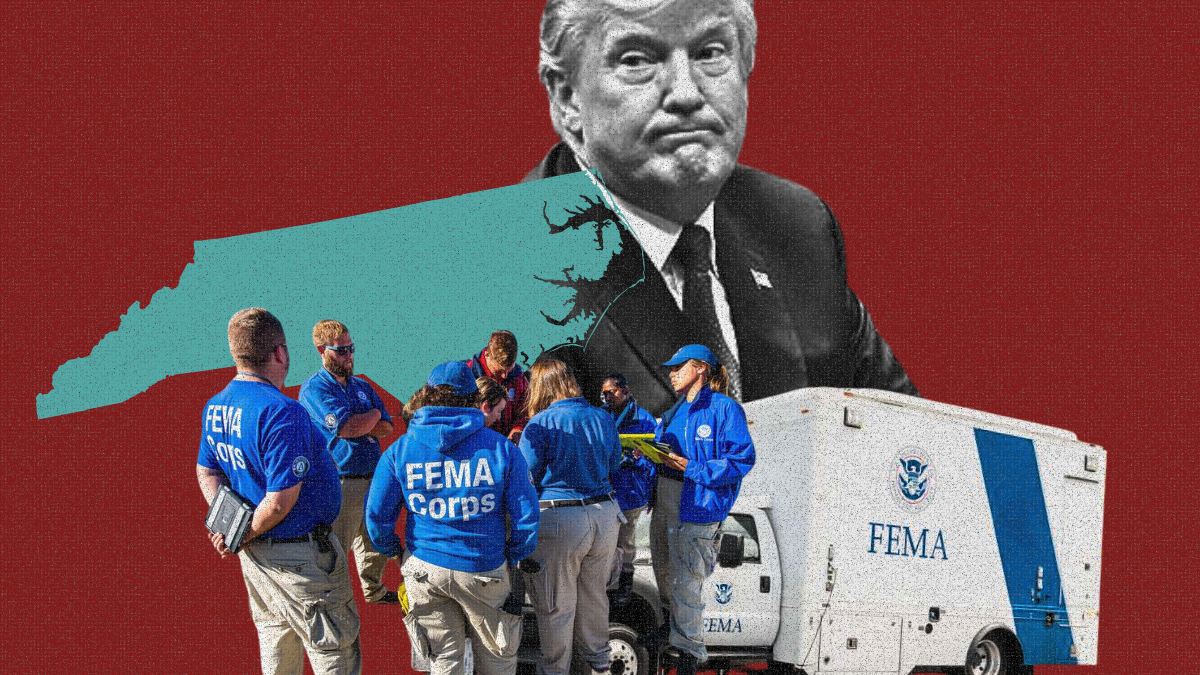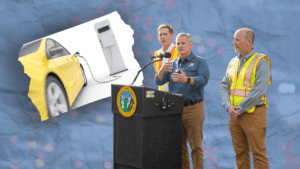Source: News & Observer & Port City Daily
During the first week of his second term as President, Donald Trump hinted at cutting back the Federal Emergency Management Agency (FEMA) during a visit to North Carolina to survey the damage from Hurricane Helene that devastated the western part of the state in September of last year.
FEMA is responsible for responding to disasters across the country, as well as aiding in recovery and mitigation efforts. After hurricane Helene, many republican politicians were quick to attack the agency. Destin Hall, who now serves as the speaker of the North Carolina State House, is one of those politicians. “We call it the disaster after the disaster,” Hall said. Even Trump, during one of his campaign visits after the hurricane, criticized the agency’s response to the disaster and spread disinformation about their recovery efforts. During his most recent visit Trump called the agency “a very big disappointment,” and goes on to say “It’s very bureaucratic. And it’s very slow.” He suggested he’d prefer to give disaster money directly to the states instead of allowing FEMA to do it’s job.
Trump’s proposal to cut back FEMA is a similar dialogue seen in Project 2025; the 900 page document acted as a blueprint of what republicans wanted to see in a second Trump term. Trump has, in the past, denied all involvement with the project, Despite it being written by multiple former members of his cabinet. Still during the debate he had with Harris he claimed he hadn’t read it, doesn’t want to read it, and that he’s not going to read it. But Trump’s current stance on making big changes to FEMA aligns with that of Ken Cuccinelli, former deputy secretary of Homeland Security that wrote the section on FEMA in Project 2025. Cuccinelli called for eliminating disaster preparation grants and moving FEMA from its current department of Homeland Security to the Department of Interior or the Department of Transportation.
During his recent visit Trump echoed the sentiment that has been spreading since Helene touched down, “The FEMA people left you high and dry,” Trump said. To battle the idea that FEMA has not shown up for the people of western North Carolinal, Deanne Criswell, FEMA’s top administrator made this statement “Just because you don’t see somebody in a FEMA shirt walking on the streets the day after a disaster doesn’t mean FEMA is not there.” Criswell added “We have people on the ground.” Here is what FEMA has done in Western North Carolina
Before the storm the agency sent at least 1,500 FEMA staff members to the Southeast. While there the members set up tons of food and millions of liters of water to be distributed once the storm cleared. Additionally, within 24 hours of the storm touching down FEMA workers were assessing hospitals in the area to make sure no patients needed to be evacuated. “We were working side by side with the state before Helene even came into North Carolina, and we’re still there today,” Criswell noted.
After the storm FEMA provided temporary shelter at hotels for roughly 13,000 North Carolinians who were displaced from their homes. Most of those 2,700 of those households are still checked into hotels, with about 740 of them set to relocate as they are no longer eligible for the program. FEMA has also partnered with USDA to set up one day agricultural fairs to help the farmers and agricultural producers affected by the storm. Over the course of their recovery efforts FEMA has awarded $316 million in cash grants to the Helene survivors in Western North Carolina. That includes $6.2 million in rental assistance.
As Trump visited Western North Carolina, Governor Josh Stein released a statement thanking the president for making the trip and requesting $20 billion more in aid for those in need. “Families, businesses, and communities are struggling and need these urgent resources to help them rebuild. I look forward to working with the Trump Administration in the coming weeks and months to get people what they need to rebuild and recover.” Stein said in the statement.
While in Western North Carolina, reporters asked Trump if there would be any conditions for North Carolina to meet before aid is given. He did not answer but instead spoke on the conditions for California getting aid. He was set to travel to California to see the devastation caused by the latest wildfires. A voter ID law being put in place was one of the conditions for California. Trump’s dialogue of aid with conditions as well as getting rid of FEMA, comes at a time of heightened concern over climate change and the crushing effects. Though he has not executed his plan to cut into FEMA, Trump has taken steps at rolling back progressive climate policies put in place by the Biden administration.





